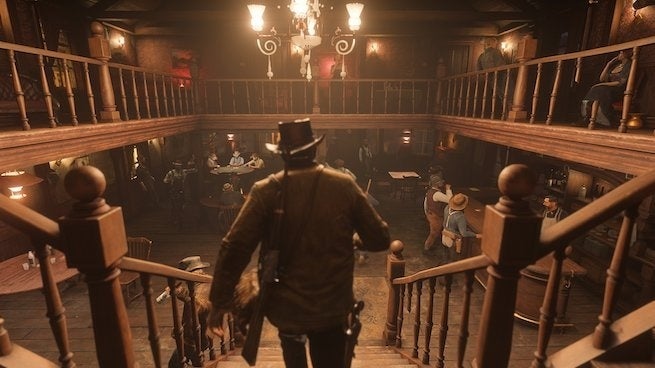Annotated Bibliography 2: The Bibliograping
1.
Alexander Zook and Mark O'Riedl (2014), Automatic Game Design Via Mechanic Generation. School of Interactive Computing, College of Computing Georgia Institute of Technology.
Using a domain-independent system to create game mechanics.Combining mechanics using a constant solver and planner.That system can work in a variety of game mechanics focusing on
the higher-level problems of designing mechanics rather
than genre-specific concerns. Developing more sophisticated playability requirements. Autonomous mechanic generation (given designer initial inputs) holds promise for creating AI designers that generate
games starting from mechanics.
Source: https://www.aaai.org/ocs/index.php/AAAI/AAAI14/paper/viewFile/8152/8466
2.
Gillian Smith, Ryan Anderson, Brian Kopleck, Zach Lindblad, Lauren Scott, Adam Wardell, Jim Whitehead, Michael Mateas (2011) Situating Quests: Design Patterns for Quest and Level Design in Role-Playing Games Center for Games and Playable Media, UC Santa Cruz.
Studying quest design by examining different role playing and quest based games. This allows us to look for patterns and create better quests. Learning how and where to fit in a quest in an open world to allow to player to explore and conquer as well as reward them.
Source: http://sokath.com/main/files/1/smith-icids11.pdf
3.
Sebastien Labottin (2012) The Fundamental Pillars of a Combat System Gamasutra.
A good combat system should be fun, clever and challenging. A player should be engaged and have many fighting options. Also make sure that when designing enemies they can match players abilities. Finally make the player feel clever about how they handled a situation in combat. You should always aim for that feeling.
Source: http://www.gamasutra.com/view/feature/175950/the_fundamental_pillars_of_a_.php
4.
Mike Stout Boss Battle Design and Structure Gamasutra.
Intro to how boss battles should feel and how they should be designed. Boss battles should feels rewarding, something achieved after a tough challenge. A boss should feel like a milestone, something to look forward too and then go further. A good boss battle should test the players skills and abilities learned throughout the game. Lastly, they should be satisfying. Difficult and tense boss battles need a satisfying ending, something to please the player.
Source: https://www.gamasutra.com/view/feature/134503/boss_battle_design_and_structure.php?print=1
5.
Gustav Grund Pihlgren Martin Nilsson Mikael Larsson Oskar Olsson Tobias Foughman Victor Gustafsson (2016) Realistic NPCs in Video Games Using Different AI Approaches Department of Computer Science and Engineering CHALMERS UNIVERSITY OF TECHNOLOGY Göteborg, Sweden.
When creating NPC's in a video game we have to take two things into consideration, the game world itself and the AI. The game world should always be developed first as it allows better planning and sets a theme and characteristics for the NPC's. The AI comes next but it's more tricky to develop good AI. Good NPC AI supports immersion. A nice and authentic world needs nice and authentic people so that the player can really immerse themselves into the experience.
Source: http://publications.lib.chalmers.se/records/fulltext/245348/245348.pdf
2.
Gillian Smith, Ryan Anderson, Brian Kopleck, Zach Lindblad, Lauren Scott, Adam Wardell, Jim Whitehead, Michael Mateas (2011) Situating Quests: Design Patterns for Quest and Level Design in Role-Playing Games Center for Games and Playable Media, UC Santa Cruz.
Studying quest design by examining different role playing and quest based games. This allows us to look for patterns and create better quests. Learning how and where to fit in a quest in an open world to allow to player to explore and conquer as well as reward them.
Source: http://sokath.com/main/files/1/smith-icids11.pdf
3.
Sebastien Labottin (2012) The Fundamental Pillars of a Combat System Gamasutra.
A good combat system should be fun, clever and challenging. A player should be engaged and have many fighting options. Also make sure that when designing enemies they can match players abilities. Finally make the player feel clever about how they handled a situation in combat. You should always aim for that feeling.
Source: http://www.gamasutra.com/view/feature/175950/the_fundamental_pillars_of_a_.php
4.
Mike Stout Boss Battle Design and Structure Gamasutra.
Intro to how boss battles should feel and how they should be designed. Boss battles should feels rewarding, something achieved after a tough challenge. A boss should feel like a milestone, something to look forward too and then go further. A good boss battle should test the players skills and abilities learned throughout the game. Lastly, they should be satisfying. Difficult and tense boss battles need a satisfying ending, something to please the player.
Source: https://www.gamasutra.com/view/feature/134503/boss_battle_design_and_structure.php?print=1
5.
Gustav Grund Pihlgren Martin Nilsson Mikael Larsson Oskar Olsson Tobias Foughman Victor Gustafsson (2016) Realistic NPCs in Video Games Using Different AI Approaches Department of Computer Science and Engineering CHALMERS UNIVERSITY OF TECHNOLOGY Göteborg, Sweden.
When creating NPC's in a video game we have to take two things into consideration, the game world itself and the AI. The game world should always be developed first as it allows better planning and sets a theme and characteristics for the NPC's. The AI comes next but it's more tricky to develop good AI. Good NPC AI supports immersion. A nice and authentic world needs nice and authentic people so that the player can really immerse themselves into the experience.
Source: http://publications.lib.chalmers.se/records/fulltext/245348/245348.pdf

Comments
Post a Comment